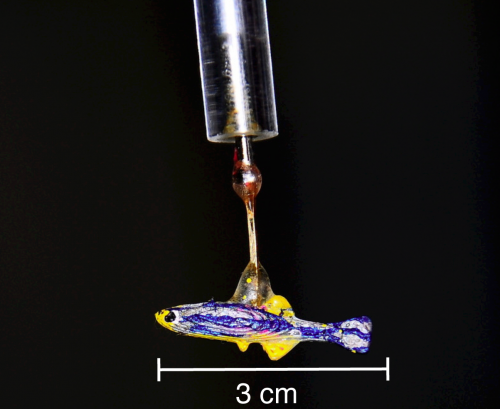With a little help from robotic, researchers investigate the communications behind swarming

Living in groups affords several benefits for animals, including better feeding opportunities and reduced risks from predators—situations in which critical information is transmitted nonverbally throughout the group. While scientists know that information is shared during coordinated maneuvers, those interactions are only a small subset of the complex behavioral repertoire displayed by the animal groups.
Maurizio Porfiri, an NYU Polytechnic School of Engineering professor of mechanical engineering, won a three-year, $350,000 grant from the National Science Foundation to investigate the directional information flow underlying collective animal behavior. The implications of this work, which integrates dynamical systems theory and behavioral studies, could transform the fields of behavioral brain research and neuropsychobiology.
In collaboration with Sachit Butail of the Indraprastha Institute of Information Technology, Delhi, Porfiri has embarked on a series of behavioral experiments on the zebrafish animal model, focusing on unidirectional information transfer.
The experiments will employ independently controlled robotic replicas along with live zebrafish and novel experimental protocols complemented with state-of-the-art behavioral quantification tools. They will seek to demonstrate that an information-theoretic approach can be used to measure social animal behavior. The unique datasets from these laboratory experiments will support the validation of a multitude of theoretical dynamical-systems approaches toward unraveling causality in complex biological and technological systems.
The project will be complemented by education and outreach activities that will foster creative, multidisciplinary thinking in Brooklyn public school students, many of whom are from groups underrepresented in the STEM (science, technology, engineering and mathematics) fields.
Provided by New York University
















